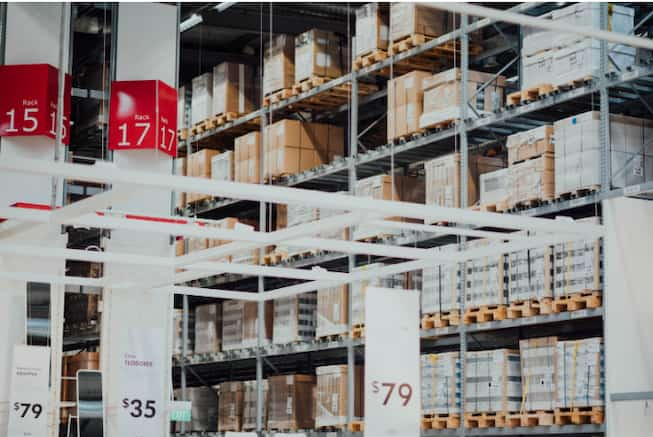In the logistics and supply chain industry, efficiency is the name of the game. As businesses strive to meet consumer demands for faster delivery and real-time tracking, the role of technology becomes increasingly crucial. One of the most groundbreaking developments in this sector is the rise of robotics. Integrated with other advanced warehouse technologies, robotics is not just an add-on but a transformative force redefining the very essence of warehousing. This article explores the pivotal role robotics play in modern warehousing operations.
Automation and Labor Efficiency
Task Automation
One of the most immediate benefits of implementing robotics in warehouse operations is task automation. Robots are capable of performing a wide range of repetitive tasks, from sorting and moving inventory to packaging and palletizing goods. By automating these labor-intensive tasks, warehouses can improve efficiency, reduce human error, and lower labor costs.
Wearable Robotics
Wearable robotic suits are an emerging trend in warehouse technologies that aim to augment human abilities. These exoskeletons can enhance workers’ strength and endurance, making it easier to lift heavy items and reducing the risk of workplace injuries.
Speed and Scalability
Rapid Processing
Robots are unmatched when it comes to speed and precision. Automated guided vehicles (AGVs) and autonomous mobile robots (AMRs) can move swiftly across the warehouse, following optimized routes to minimize transit time. This rapid processing is particularly valuable during peak seasons when order volumes surge.
Scalability
Robotics offers an unprecedented level of scalability. As a warehouse grows, it’s relatively easy to add more robots to the system. Unlike traditional setups that require considerable time and resources for scaling up, a robotic system can adapt more nimbly to increased demands.
Inventory Management and Accuracy
Real-Time Tracking
Incorporating robotics into inventory management can significantly improve tracking accuracy. Robots equipped with advanced scanning technology can perform frequent inventory checks, ensuring that data is always up-to-date. This minimizes the risks of overstocking or understocking and improves order accuracy.
Smart Shelving
Robotic smart shelves can automatically adjust their height and configuration based on the size and quantity of items they hold. This dynamic zoning capability optimizes storage space and makes item retrieval more efficient.
Safety and Quality Control
Hazard Detection
Hazard Detection takes on a new level of efficiency with robotics integrated into warehouse operations. Robots equipped with advanced sensors can quickly identify potential risks like gas leaks, fires, or chemical spills. Once detected, these robots can either initiate automatic safety measures or alert human operators for immediate action. The result is a safer workplace, with significantly reduced response times to hazardous situations, thereby minimizing potential damage and downtime.
Quality Assurance
Quality Assurance takes a leap forward with the incorporation of robotics into warehouse operations. Robots equipped with advanced scanning and imaging technology can perform meticulous quality checks on goods at various stages of the supply chain. This automation ensures that only products meeting the specified quality criteria move forward, thereby reducing the likelihood of returns or recalls. In the long run, robotic quality assurance can significantly enhance brand reputation and customer satisfaction.
Sustainability and Cost-Effectiveness
Energy Efficiency
Energy Efficiency in modern warehousing is greatly enhanced by the use of robotics. Robots can be programmed to operate at lower power levels during periods of reduced activity or to follow energy-optimized routes within the warehouse. These smart adjustments contribute to significant energy savings, reducing a warehouse’s carbon footprint and operational costs. As such, robotic systems are integral to creating more sustainable and eco-friendly warehouse operations.
Long-Term Savings
Long-Term Savings are one of the most compelling benefits of integrating robotics into your warehouse operations. While the upfront investment can be substantial, the ongoing reductions in labor and energy costs provide a quick return on investment. Moreover, robotics improve efficiency and accuracy, leading to fewer costly errors or delays. Over time, these cumulative benefits make robotics not just a tactical decision but a strategic move for long-term financial sustainability.
The Future is Now: Warehouse Technologies and Robotics
The integration of robotics with other warehouse technologies marks a significant step towards the future of warehousing. Companies are increasingly recognizing the myriad benefits, from labor and cost savings to improved safety and quality control. As technology continues to advance, we can expect robots to take on even more complex tasks, including decision-making processes based on artificial intelligence.
Conclusion
The role of robotics in modern warehousing is far from supplementary; it’s revolutionary. Through automation, speed, safety, and cost-efficiency, robotics is changing the way we think about warehousing. As businesses continue to evolve in an ever-competitive market, the implementation of robotics and other advanced warehouse technologies will likely become not just an option but a necessity for staying ahead of the curve.
Table of Contents
